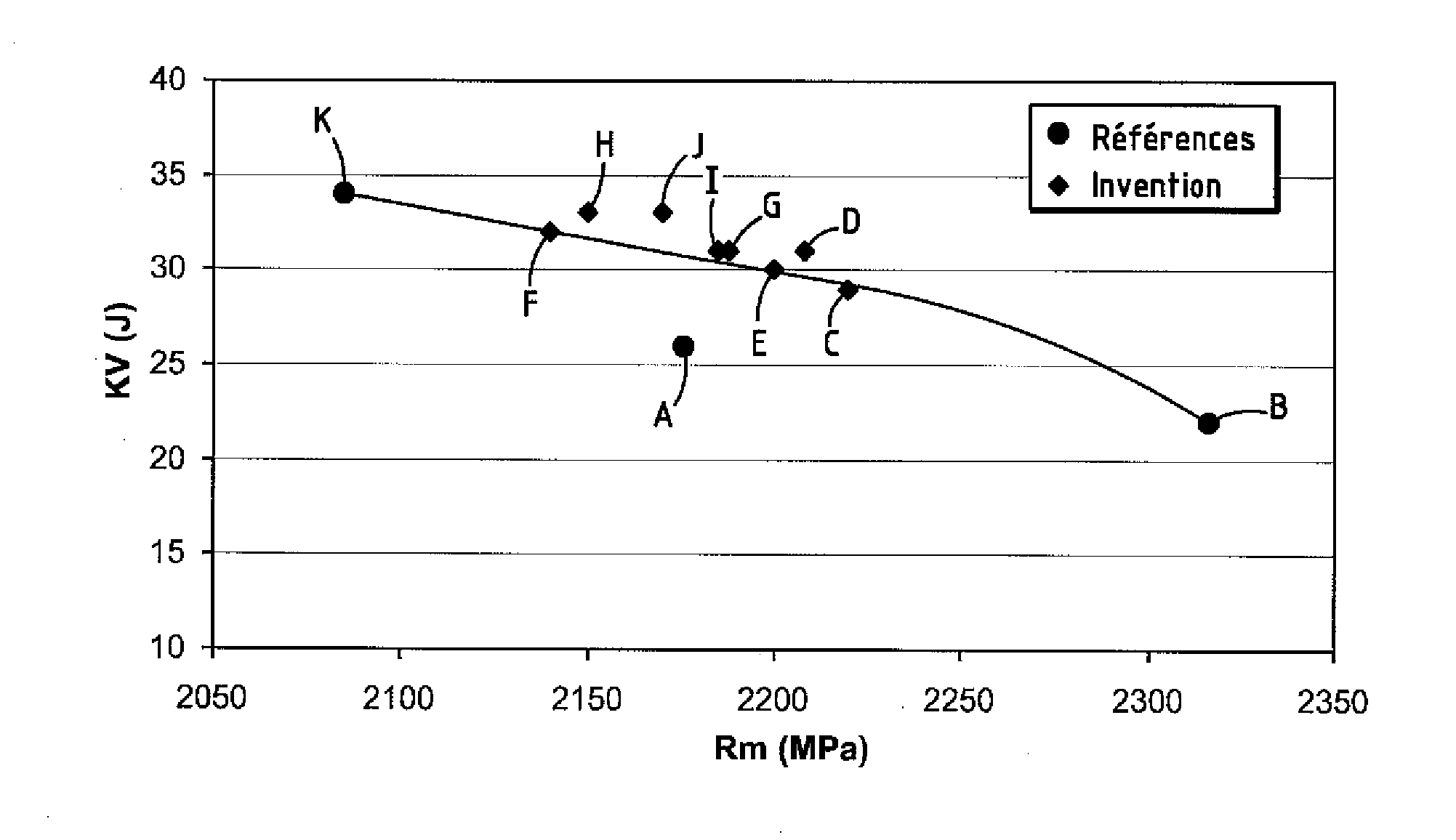Hardened Martensitic Steel Having a Low Cobalt Content, Process for Manufacturing a Part from Steel, and Part thus Obtained
- Summary
- Abstract
- Description
- Claims
- Application Information
AI Technical Summary
Benefits of technology
Problems solved by technology
Method used
Image
Examples
Embodiment Construction
[0070]In the steels of the class of those of the invention, “duplex” hardening is carried out, i.e. obtained together by intermetallic compounds of the β-NiAl type and by carbides of the M2C type, in the presence of reversion austenite formed / stabilized by nickel enrichment obtained by diffusion during age hardening, which gives ductility to the structure by the formation of a sandwich structure (a few % of stable and ductile austenite between the laths of hardened martensite).
[0071]The formation of nitrides, of Ti, Zr and Al notably, should be avoided, which are embrittling: they deteriorate the toughness and fatigue strength. As these nitrides may precipitate from contents of 1 to a few ppm of N in the presence of Ti, Zr and / or Al and as conventional smelting means make it difficult to attain less than 5 ppm of N, the steel of the invention observes the following rules.
[0072]In principle, any addition of Ti is limited (maximum allowed: 100 ppm), and N is limited as far as possible...
PUM
| Property | Measurement | Unit |
|---|---|---|
| Temperature | aaaaa | aaaaa |
| Temperature | aaaaa | aaaaa |
| Temperature | aaaaa | aaaaa |
Abstract
Description
Claims
Application Information
 Login to View More
Login to View More - R&D
- Intellectual Property
- Life Sciences
- Materials
- Tech Scout
- Unparalleled Data Quality
- Higher Quality Content
- 60% Fewer Hallucinations
Browse by: Latest US Patents, China's latest patents, Technical Efficacy Thesaurus, Application Domain, Technology Topic, Popular Technical Reports.
© 2025 PatSnap. All rights reserved.Legal|Privacy policy|Modern Slavery Act Transparency Statement|Sitemap|About US| Contact US: help@patsnap.com

